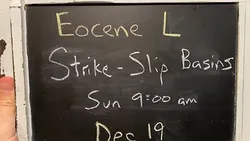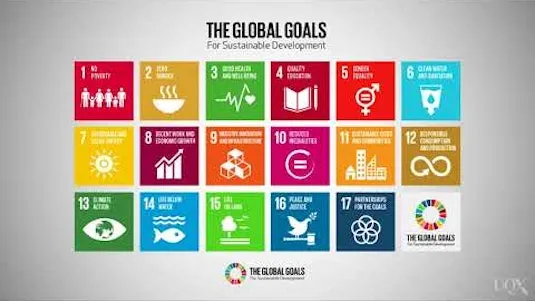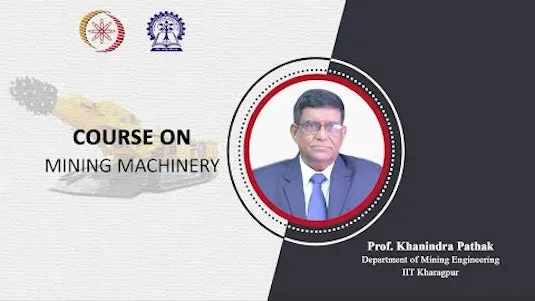
Eocene L - Strike-Slip Basins w& Erin Donaghy 
Erin Donaghy's lecture covers the Eocene L - Strike-Slip Basins, focusing on the Chumstick Basin. She reviews the strike-slip faults and explains how to measure the offset. She also discusses the Straight Creek Fault and why a basin is formed when there is a strike-slip fault. ▼
ADVERTISEMENT
Course Feature
![]() Cost:
Cost:
Free
![]() Provider:
Provider:
Youtube
![]() Certificate:
Certificate:
Paid Certification
![]() Language:
Language:
English
![]() Start Date:
Start Date:
On-Demand
Course Overview
❗The content presented here is sourced directly from Youtube platform. For comprehensive course details, including enrollment information, simply click on the 'Go to class' link on our website.
Updated in [February 21st, 2023]
Learners can learn a variety of topics from this course, including plate tectonics, structural geology, and earth science. They will gain an understanding of the Eocene period and the formation of strike-slip basins. They will learn how to measure offset on strike-slip faults, and how to identify and interpret piercing points. They will also learn about the depositional model of the Chumstick Basin, and how to identify other basins like it. Finally, they will gain insight into the research of Erin Donaghy, including her master's thesis and newer paper. This course provides a comprehensive overview of the geological processes that shape our planet, and is an invaluable resource for anyone interested in geology.
[Applications]
After taking this course, students should be able to apply the concepts learned to other strike-slip basins. They should be able to measure offset on strike-slip faults, identify pull-apart basins, and understand the depositional model of the Chumstick Basin. Additionally, they should be able to identify other basins similar to the Chumstick Basin and understand the sedimentation rate of the basin. Finally, they should be able to use the information from Erin Donaghy's master's thesis and newer paper to further their understanding of strike-slip basins.
[Career Paths]
1. Geoscientist: Geoscientists study the physical aspects of the Earth, such as its composition, structure, and processes, to learn about its past, present, and future. They use their knowledge to help locate and develop natural resources, such as petroleum and minerals, and to help mitigate natural hazards, such as earthquakes and landslides. The demand for geoscientists is expected to grow in the coming years as the need for natural resources increases.
2. Petroleum Engineer: Petroleum engineers design and develop methods for extracting oil and gas from deposits below the Earth's surface. They also develop new technologies to improve the efficiency of oil and gas production. As the demand for energy increases, the demand for petroleum engineers is expected to grow.
3. Environmental Scientist: Environmental scientists study the environment and its interactions with humans and other organisms. They use their knowledge to develop solutions to environmental problems, such as air and water pollution, climate change, and land use. The demand for environmental scientists is expected to grow as the need for sustainable solutions to environmental problems increases.
4. Hydrologist: Hydrologists study the movement, distribution, and quality of water on Earth and other planets. They use their knowledge to help manage water resources, such as rivers, lakes, and groundwater, and to mitigate the effects of floods and droughts. The demand for hydrologists is expected to grow as the need for water resources management increases.
[Education Paths]
1. Geology: Geology is a field of study that focuses on the physical structure and composition of the Earth. It is a multidisciplinary field that combines aspects of physics, chemistry, biology, and mathematics to understand the Earth’s history, structure, and processes. Geology degrees are becoming increasingly popular as the demand for geologists grows in the energy, mining, and environmental sectors. Developing trends in geology include the use of new technologies such as remote sensing, GIS, and geophysical methods to better understand the Earth’s structure and processes.
2. Petroleum Engineering: Petroleum engineering is a field of engineering that focuses on the exploration, production, and transportation of oil and gas. Petroleum engineers use their knowledge of geology, physics, and mathematics to develop new technologies and methods for extracting oil and gas from the Earth. Developing trends in petroleum engineering include the use of advanced drilling techniques, such as horizontal drilling, and the use of new technologies such as 3D seismic imaging to better understand the subsurface structure of oil and gas reservoirs.
3. Environmental Science: Environmental science is a field of study that focuses on the interactions between the environment and human activities. Environmental scientists use their knowledge of biology, chemistry, and geology to understand the impacts of human activities on the environment and develop strategies for mitigating those impacts. Developing trends in environmental science include the use of new technologies such as remote sensing and GIS to better understand the impacts of human activities on the environment.
Course Provider

Provider Youtube's Stats at AZClass
Discussion and Reviews
0.0 (Based on 0 reviews)
Explore Similar Online Courses

C++ Crash Course -Learn to code today

C++ Full Course for Beginners ️

Python for Informatics: Exploring Information

Social Network Analysis

Introduction to Systematic Review and Meta-Analysis

The Analytics Edge

DCO042 - Python For Informatics

Causal Diagrams: Draw Your Assumptions Before Your Conclusions

Whole genome sequencing of bacterial genomes - tools and applications

Mining Engineering

The Future of Mining?


Start your review of Eocene L - Strike-Slip Basins w& Erin Donaghy